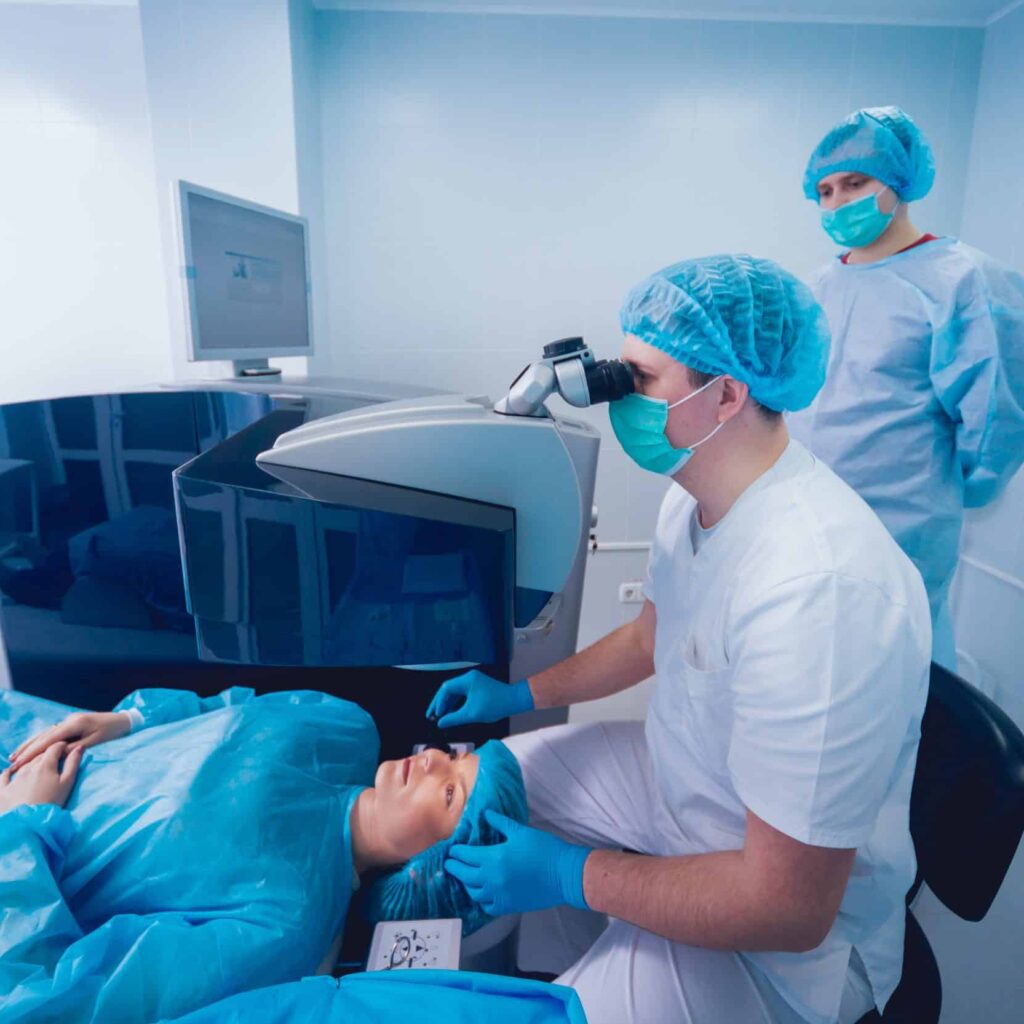In recent years, the world of ophthalmology has seen significant advancements, one of which is the SMILE (Small Incision Lenticule Extraction) eye surgery. This minimally invasive procedure has become increasingly popular for treating myopia (nearsightedness) and astigmatism. If you are considering eye surgery in Sydney, understanding the benefits, risks, and costs associated with SMILE is essential for making informed decisions.
Understanding SMILE Eye Surgery
SMILE eye surgery is a cutting-edge procedure that utilizes a femtosecond laser to remove a small lens-shaped tissue from the cornea, correcting the patient’s vision in the process. Unlike traditional LASIK, which requires the creation of a corneal flap, SMILE is performed through a tiny incision, resulting in less disruption to the cornea. This innovation is designed to enhance patient safety, comfort, and recovery time.
SMILE eye surgery Sydney presents an innovative option for individuals looking to correct their vision and reduce reliance on glasses or contact lenses. With its numerous benefits, including a minimally invasive approach and rapid recovery times, it’s no wonder that it has gained popularity among patients in Sydney.
The procedure begins with the application of numbing eye drops, ensuring that patients remain comfortable throughout the surgery. The laser then creates the lenticule inside the cornea, which is extracted through the small incision. The surgery usually takes around 20 minutes for both eyes, and most patients experience immediate improvements in their vision.

Another appealing aspect of SMILE surgery is that it can be performed on an outpatient basis, allowing patients to return home shortly after the procedure. This means no overnight hospital stays, which add to the convenience of the treatment process. Patients are typically advised to have someone accompany them to the clinic, as their vision may be temporarily blurry immediately after the surgery, and they may need assistance getting home.
The Benefits of SMILE Eye Surgery
One of the most significant benefits of SMILE is its minimally invasive nature. The small incision used during the procedure minimizes trauma to the cornea, which can lead to quicker healing and less post-operative discomfort. Many patients report experiencing less pain compared to other refractive surgeries. Additionally, the precision of the femtosecond laser technology allows for a highly customizable approach, tailoring the treatment to the unique shape and thickness of each patient’s cornea.
Moreover, the preservation of the corneal nerves in SMILE surgery contributes to a lower risk of dry eyes, a common side effect of traditional LASIK procedures. The maintenance of these nerves helps sustain the natural tear production necessary for healthy eye function. This is particularly beneficial for individuals who may have previously struggled with dry eyes or other ocular surface issues, making SMILE a more attractive option for a broader range of patients.
Another notable advantage is that SMILE has shown impressive outcomes in visual performance. Studies have demonstrated that patients often achieve 20/20 vision or better following surgery, allowing them to enjoy a more active lifestyle without reliance on glasses or contact lenses. Furthermore, many patients report enhanced contrast sensitivity, which can improve visual clarity in low-light conditions, such as driving at night or participating in outdoor activities.
Read about cataract surgery benefits at: Understanding Cataract Surgery Cost for Pensioners in Australia
Potential Risks of SMILE Eye Surgery
As with any surgical procedure, SMILE eye surgery comes with potential risks. While the overall complication rate is low, some patients may experience side effects such as glare, halos, or difficulty with nighttime vision. These effects typically resolve as the vision stabilizes, but they can be concerning for some individuals. It is essential for patients to discuss these potential side effects with their surgeon to ensure they have a comprehensive understanding of what to expect during recovery. Read more about side effects on https://uhs.princeton.edu/health-resources/common-illnesses
It’s also important to note that not everyone is a suitable candidate for SMILE surgery. Patients with certain pre-existing conditions, such as severe dry eye syndrome, corneal irregularities, or very high prescriptions, may not be eligible for the procedure. A thorough pre-operative assessment is crucial to determining candidacy. During this evaluation, advanced diagnostic tools may be used to map the cornea’s surface and assess overall eye health, ensuring that the procedure is safe and appropriate for each individual.
In rare cases, under-correction or over-correction of vision may occur, necessitating further corrective procedures. It’s essential for patients to have realistic expectations, as outcomes can vary based on individual circumstances. Surgeons will often provide a detailed explanation of the factors that can influence results, including the patient’s age, the stability of their prescription, and the overall health of their eyes, which can help patients make informed decisions about their vision correction options.
Cost of SMILE Eye Surgery in Sydney
The cost of SMILE eye surgery can vary significantly based on several factors, including the clinic’s location, the surgeon’s experience, and the specific technologies used during the procedure. On average, patients in Sydney can expect to pay between AUD 3,500 to AUD 5,000 per eye.
While this may represent a considerable investment, many find that the long-term savings from not purchasing glasses or contact lenses make the procedure worthwhile. It’s also essential to factor in the potential improvement in quality of life that comes from having greater freedom in daily activities. For instance, individuals who enjoy sports or outdoor activities often find that the absence of corrective eyewear enhances their performance and enjoyment, allowing them to engage more fully without the hassle of glasses slipping or contact lenses drying out.
Some private health insurance plans may provide partial coverage for SMILE eye surgery, but patients should check with their providers for specific details. Financing options are often available at many clinics, allowing patients to break down the costs into manageable instalments. Additionally, some clinics may offer promotional packages or discounts during certain times of the year, making it worthwhile for prospective patients to keep an eye out for these opportunities.
Finding the Right Surgeon for Your SMILE Eye Surgery
Choosing the right surgeon can be a decisive factor in the success of your SMILE eye surgery. It’s crucial to select an experienced ophthalmologist who specializes in refractive surgery and has a proven track record of successful SMILE outcomes. Researching and reading reviews from former patients can also help build confidence in your surgeon’s abilities. Many clinics provide before-and-after galleries showcasing previous patients’ results, which can be a valuable resource in making your decision. Click here to find more about resource.
During an initial consultation, the surgeon should discuss your vision goals, assess your eye health, and explain the procedure in detail. This meeting provides an opportunity to ask questions, voice concerns, and ensure that you feel comfortable and informed before deciding. Moreover, it’s advisable to inquire about the technology used in the procedure, as advancements in laser technology can significantly affect the precision and safety of the surgery. Surgeons who are transparent about their techniques and outcomes often inspire greater trust and confidence in their patients.
Ultimately, investing time in finding the right clinic and surgeon can greatly enhance your experience and results for SMILE eye surgery. The relationship you build with your surgeon can also play a critical role in your overall satisfaction, as a supportive and communicative approach can alleviate any pre-surgery anxiety and foster a positive surgical experience.

Conclusion
However, it’s vital to understand the potential risks and costs associated with the procedure. Conducting thorough research, consulting with a qualified surgeon, and setting realistic expectations will prepare you for a successful journey towards improved sight. If you’re considering SMILE eye surgery, take the first step today by scheduling a consultation with an experienced ophthalmologist to discuss your options.

